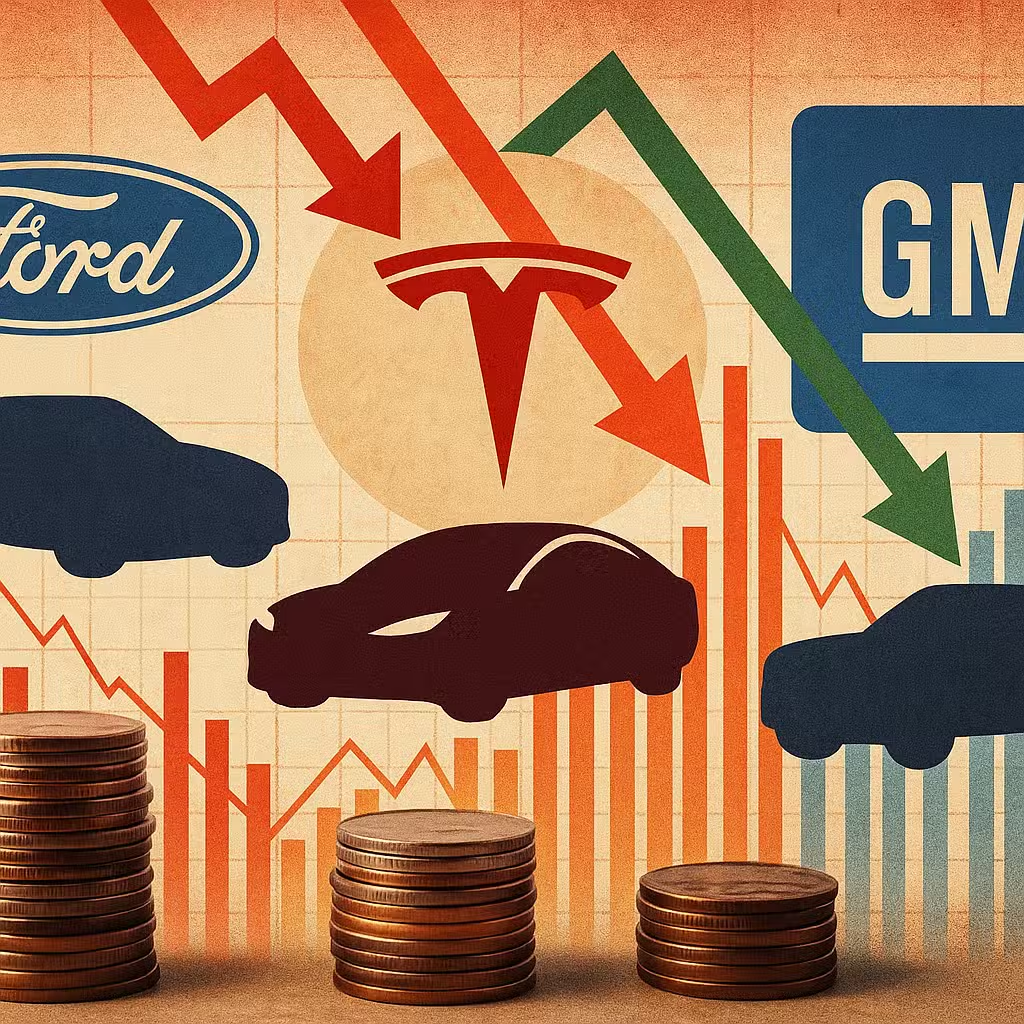Ford, Tesla, GM Earnings to Reveal Impact of Tariffs and Market Pressures for Investors
Imagine driving down a bumpy road—you never know what’s around the corner, and sometimes you hit a pothole. That’s what the car industry has felt like lately, with lots of surprises and twists. For investors, these bumps matter because they can shake up stock prices, whole sectors, and even your portfolio.
Why This Matters for Investors
The U.S. auto industry has faced big challenges this year: tariffs (extra taxes on imports), inflation (rising prices), and worries about the economy. At first, experts thought things would get much worse, but so far, the industry has stayed stronger than expected. This is important if you invest in automakers, auto suppliers, or related sectors.
Bullish Case: Reasons for Optimism
- Sales Resilience: Car sales and production have held up better than many thought. S&P Global recently raised its 2025 U.S. light vehicle sales forecast to 16.1 million vehicles, up 2% from before.
- Tariffs Not a Total Disaster: While tariffs have hurt, they haven’t crashed the market. Some automakers have managed to handle the extra costs so far.
- Stable Consumer Spending: Many Americans are still buying cars, especially those with higher incomes. About two-thirds of new car buyers have household incomes above the U.S. median of $83,730 (U.S. Census Bureau).
- Supplier Stocks Up: Shares of big auto suppliers like Aptiv and BorgWarner have climbed double digits this year, even with all the uncertainty.
Bearish Case: Reasons to Be Careful
- Profit Pressure: Major automakers like Ford, General Motors, and Tesla are expected to report big drops in earnings, even if they stay profitable.
- Tariff & Trade Risks: Tariffs have cost automakers billions, and more trade disputes (especially with China and Mexico) could make things worse.
- Supplier Struggles: Some suppliers are in trouble. For example, First Brands Group recently filed for bankruptcy, raising worries about the health of the whole supply chain.
- Consumer Stress: Lower-income buyers are having a tough time. Subprime auto loan delinquencies hit 6.43% in August, matching record highs (Fitch Ratings).
- EV Growing Pains: The push into electric vehicles (EVs) has been rocky. GM had to take a $1.6 billion charge related to slowing EV plans.
- Uncertain Regulations: Changing rules about fuel economy and trade make it hard for companies to plan ahead.
Historical Context: How Bad Is It?
Auto industry ups and downs aren’t new. During the 2008 financial crisis, U.S. car sales dropped below 11 million. Even though today’s challenges are serious, the industry is still far above those lows—showing resilience, but also the need for caution (Barron’s).
What’s Next? K-Shaped Recovery Worries
Experts warn the auto industry shows signs of a “K-shaped” economy. This means wealthier people keep doing well, buying new cars, and benefiting from strong stock markets, while lower-income families fall further behind. If tariffs and higher prices hit consumers harder next year, car sales could slow, especially for people on tighter budgets.
Investor Takeaway
- Diversify Your Holdings: Don’t put all your money in one automaker or supplier. The industry is unpredictable.
- Watch for Earnings Surprises: Upcoming quarterly reports from Ford, GM, and Tesla may move the market—keep an eye on their results.
- Monitor Tariff News: Trade policy can change fast. Stay updated on tariff talks and their impact on costs and profits.
- Focus on Strong Balance Sheets: Companies with less debt and more cash are better equipped to handle more bumps in the road.
- Look Beyond the Headlines: Remember, even when things look rough, some stocks (especially big suppliers) have performed well. Dig into the details before making decisions.
For the full original report, see CNBC







